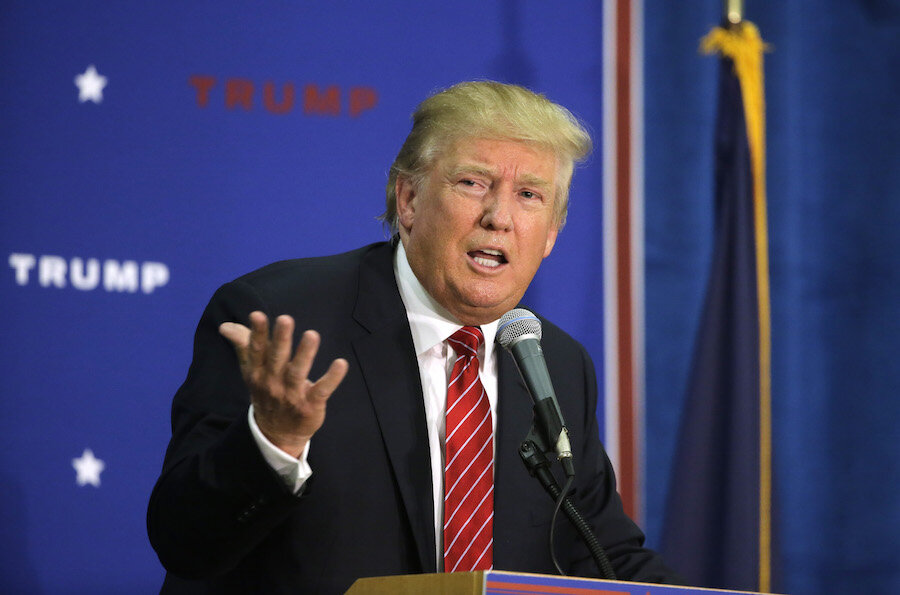Opinion: Donald Trump is what's wrong with American bankruptcy laws
Loading...
On the opening day of Trump Plaza in Atlantic City in 1984, Donald Trump stood in a dark topcoat on the casino floor celebrating his new investment as the “finest building in the city and possibly the nation.”
Thirty years later, the Trump Plaza folded, leaving some 1,000 employees without jobs. Trump, meanwhile, was on Twitter claiming he had “nothing to do with Atlantic City,” and praising himself for his “great timing” in getting out of the investment.
As I show in my new book, “Saving Capitalism: For the Many, Not the Few,” people with lots of money can easily avoid the consequences of bad bets and big losses by cashing out at the first sign of trouble. Bankruptcy laws protect them. But workers who move to a place like Atlantic City for a job, invest in a home there, and build their skills have no such protection. Jobs vanish, skills are suddenly irrelevant and home values plummet. They’re stuck with the mess.
Bankruptcy was designed so people could start over. But these days, the only ones starting over are big corporations, wealthy moguls and Wall Street bankers, who have had enough political clout to shape bankruptcy laws (like many other laws) to their needs.
One of the most basic of all economic issues is what to do when someone can’t pay what they owe. The U.S. Constitution (Article I, Section 8, Clause 4) authorizes Congress to enact “uniform Laws on the subject of Bankruptcies throughout the United States,” and Congress has done so repeatedly.
In the last few decades, these changes have reflected the demands of giant corporations, Wall Street banks, big developers and major credit card companies who wanted to make it harder for average people to declare bankruptcy but easier for themselves to do the same.
The granddaddy of all failures to repay what was owed occurred in September 2008 when Lehman Brothers went into the largest bankruptcy in history, with more than $691 billion of assets and far more in liabilities.
Some commentators (including yours truly) urged then that the rest of Wall Street be forced to grapple with their problems in bankruptcy as well. But Lehman’s bankruptcy so shook the Street that Henry Paulson, Jr., George W. Bush’s outgoing secretary of the treasury, and, before that, head of Goldman Sachs, persuaded Congress to authorize several hundred billion dollars of funding to protect the other big banks from going bankrupt.
Paulson didn’t explicitly state that big banks were too big to fail. They were, rather, too big to be reorganized under bankruptcy—which would, in Paulson’s view, have threatened the entire financial system.
The real burden of Wall Street’s near meltdown fell on homeowners. As home prices plummeted, many found themselves owing more on their mortgages than their homes were worth, and unable to refinance. Yet chapter 13 of the bankruptcy code (whose drafting was largely the work of the financial industry) prevents homeowners from declaring bankruptcy on mortgage loans for their primary residence.
When the financial crisis hit, some members of Congress, led by Illinois Sen. Dick Durbin, tried to amend the code to allow distressed homeowners to use bankruptcy. That would have given them a powerful bargaining chip for preventing the banks and others servicing their loans from foreclosing on their homes. If the creditors and homeowners couldn’t come to an agreement, the homeowner’s case would go to a bankruptcy judge who presumably would reduce the amount to be repaid rather than automatically force people out of their homes.
The bill passed the House, but when in late April 2009 Durbin offered his amendment in the Senate, the financial industry—among the largest donors to both parties—argued it would greatly increase the cost of home loans. (No convincing evidence showed this to be the case.) The bill garnered only 45 Senate votes even though Democrats were in the majority. As a result, distressed homeowners had no bargaining power. Subsequently, more than 5 million lost their homes.
Another group of debtors who can’t use bankruptcy to renegotiate their loans are former students laden with student debt. Student loans are now about 10 percent of all debt in the United States, second only to mortgages and higher than auto loans and credit card debt. But the bankruptcy code doesn’t allow student debts to be worked out under its protection.
If graduates can’t meet their payments, lenders can garnish their paychecks. If still behind on student loan payments by the time they retire, lenders can even garnish their Social Security checks. The only way graduates can reduce their student debt burdens, according to a provision enacted at the behest of the student loan industry, is to prove that repayment would impose an “undue hardship” on them and their dependents. This is a stricter standard than bankruptcy courts apply to gamblers trying to reduce their gambling debts.
Congress and its banking patrons fear that if graduates could declare bankruptcy on their debts, they might never repay them. But a better alternative would be to allow former students to use bankruptcy where the terms of the loans are obviously unreasonable (such as double-digit interest rates), or if the schools they owed money to had very low post-graduation employment rates.
State and federal lawmakers once sought to protect vulnerable borrowers by setting limits on the interest that could be demanded by creditors. But in recent years, under political pressure from big banks like Citigroup, many state legislatures have repealed those limits. It’s not unusual for borrowers who want an advance on an upcoming paycheck to now pay annualized rate of 300 percent or more.
Such legal changes helped swell profits at Citigroup, whose former OneMain Financial unit was one of the leading payday lenders. “There was simply no need to change the law,” Rick Glazier, a North Carolina Democratic legislator who opposed raising interest rate limits there, told the New York Times. “It was one of the most brazen efforts by a special interest group to increase its own profits that I have ever seen.”
It’s not just changes in the bankruptcy code and interest-rate regulations that benefit the wealthy. Real estate developers like Trump have also benefited from a welter of special subsidies and tax breaks squeezed out of pliant local legislators.
Trump has the unique distinction of being the first developer in New York to receive a public subsidy for commercial projects under programs initially reserved for improving slum neighborhoods. Referring to how he managed to win a 40-year tax abatement for rebuilding a crumbling hotel at Grand Central Station—a deal that in the first decade cost taxpayers $60 million—Trump quipped, “Someone said, ‘How come you got 40 years?’ I said, ‘Because I didn’t ask for 50.’”
Trump’s success at getting such deals is better explained by a 1980s study by Newsday, showing Trump had donated more than anyone else to members of the New York City Board of Estimate, which at the time approved all land-use development.
Trump sparred with Jeb Bush in the second GOP debate last Wednesday night over Trump’s alleged lobbying for casino gambling in Florida. “You wanted it and you didn’t get it because I was opposed to casino gambling before, during and after,”Bush charged. “I’m not going to be bought by anybody.” Trump responded: “I promise if I wanted it, I would have gotten it.”
Indeed, Trump is a poster child for how big money buys the laws it wants. “As a businessman and a very substantial donor to very important people, when you give, they do whatever the hell you want them to do,” Trump told the Wall Street Journal. “As a businessman, I need that.”
The prevailing myth that America has a “free market” existing outside and apart from government prevents us from understanding that the very rules by which the market runs—from the federal bankruptcy code to state usury laws to local tax abatements—are made by lawmakers.
And the real issue is whose interests those lawmakers are pursuing. Are they working for the vast majority of Americans, who are getting nowhere economically and whose political voices are barely even heard these days? Or are they beholden to those at the top—CEOs of the biggest corporations and Wall Street banks, hedge-fund and private-equity moguls and billionaires—who now own more of the nation’s wealth than the robber barons of the Gilded Age of the late 19th century, and are using some of that wealth to further rig the rules to their benefit?
We don’t need Donald Trump to give us the answer.








